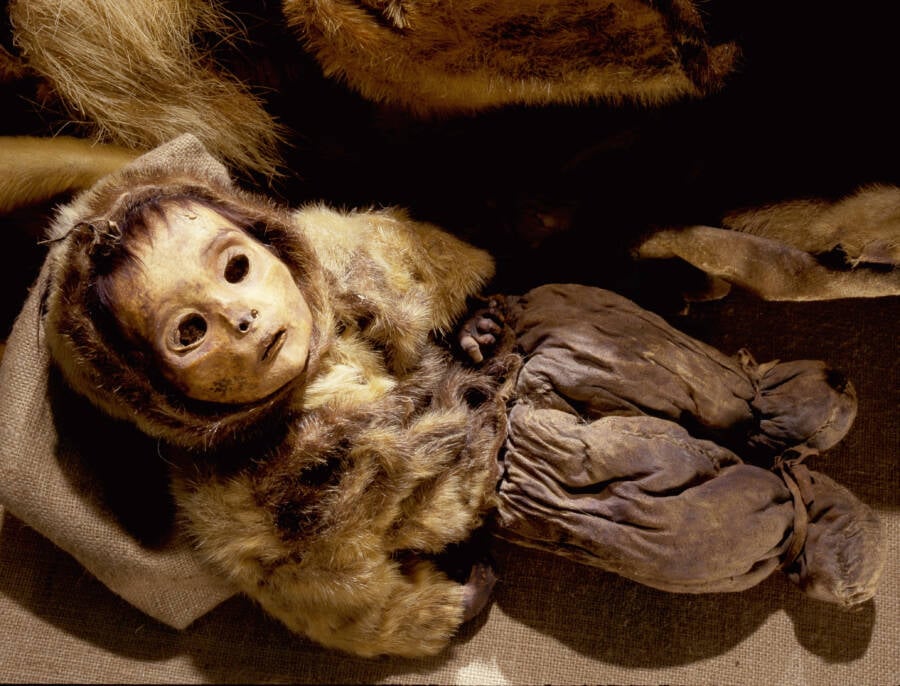The Qilakitsoq Mummies: The Inuits Who Were Naturally Freeze-Dried In Greenland

Werner Forman/Universal Images Group/Getty ImagesA Qilakitsoq female mummy’s tattoo, which researchers believe signified her tribal membership and marital status.
While hunting grouse in Greenland in 1972, brothers Hans and Jokum Grønvold came across a shallow cave. There, they found eight bodies stacked vertically. The corpses were so incredibly well-preserved that the brothers thought they were looking at a burial that had happened recently.
After they reported the site to authorities, however, archaeologists investigated the site and discovered that the bodies were about 500 years old. The people likely died in 1475 C.E. near the abandoned Inuit settlement of Qilakitsoq, earning them the name the “Qilakitsoq Mummies.”
Experts also found that the cold temperatures of the Nuussuaq Peninsula in northwestern Greenland had essentially “freeze-dried” the bodies, keeping most of their organs intact and the tattoos on their skin still visible.
Of all the bodies, the best preserved was that of a six-month-old infant who was likely buried alive. Researchers have theorized that the preservation was due to the baby’s small size, as the body would have frozen quickly.

Werner Forman/Universal Images Group/Getty ImagesThe six-month-old Qilakitsoq child preserved through natural mummification.
Archaeologists later learned that three of the adult bodies in the grave had been sisters. Buried with them, along with the infant, were an 18-year-old girl, and a boy who was about two to four years old.
The bodies offered significant insight into Thule Inuit culture.
They were heavily infested with lice, their intestines full of moss, and their lungs filled with soot. This implied that they supplemented their meat-heavy diets with plants and likely breathed in the soot due to lamps that were lit by seal oil in their homes. The lice, it seems, leaped from their bodies to their food as they ate, since some of the lice were found in their intestines.
There are also Norse records of trades with the Thule Inuit around 1200 C.E., though these trade deals, of course, sometimes turned violent.
One such account from Norse traders peculiarly noted, “When [the Inuits] are struck by weapons, their wounds are white, with no flow of blood… but when they die, the bleeding is almost endless.”





